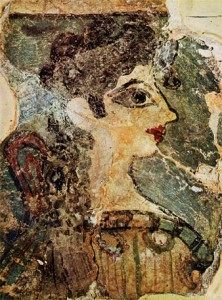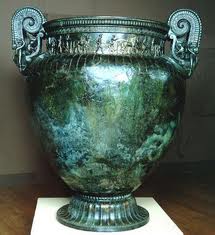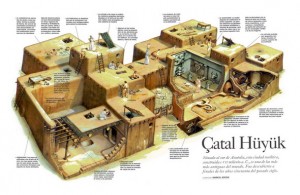Click here for direct link to audio Episode #35. 
Click here for previous episodes.
Some tech difficulties after an “upgrade” made us miss last week! With this temporary fix we are back on track, and as promised, here is Minoan Crete.
Upon her discovery, this lovely lady was nicknamed “La Parisienne”, and she is a major icon of Minoan civilization.
Who were these amazingly artistic people? The jury is still out. Their civilization flourished between 2200 BC and 1450 BC, long before the Golden Age of Athens. In fact, that’s 1,000-2,000 years before Pericles and his fabulously enduring monument, the Parthenon. Consider the events and world changes that have happened within the past 2,000 years! The Knossos palace finds of Sir Arthur Evans in 1899 AD shook the archaeological world! This ancient Bronze Age civilization existed only in the dim distant memory of legends. They are referenced in Homer and the stories of the ancient heroes, but until Evans’ excavations between 1899 AD and 1935 AD, the magnitude of their power and prestige was unknown. This is the land of King Minos and the Labyrinth of Daedalus. Of Theseus, Ariadne, and the Minotaur. This is the land of the bull dancers and the snake goddesses. And their story is still unclear!
The Ashmolean Museum in Oxford houses the Sir Arthur Evans finds. I was there in 2006 and remarked to myself how antiquated it looked for such an important collection. Lo & behold, the museum was renovated in 2009. I will definitely visit in the future.
Enjoy the podcast! Next week, the Mycenaeans. Bring it on, Clytemnestra!















